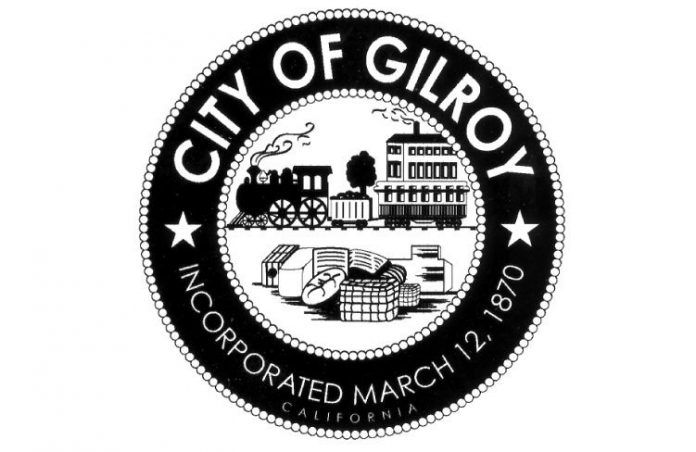The price of covering city employees’ benefits has risen more
than 70 percent over the past six years, outpacing the city’s total
budget expenditures more than twice over.
Gilroy – The price of covering city employees’ benefits has risen more than 70 percent over the past six years, outpacing the city’s total budget expenditures more than twice over.
The city’s financial projections show slighter increases as California’s Public Employees’ Retirement System recovers from the dot-com bust and also grapples with rising healthcare costs on a national level. CalPERS covers Gilroy employees’ health insurance and their retirement plans by investing money from California cities and their employees in everything from relatively safe mutual funds to more volatile, higher-yield stocks.
But CalPERS says projected returns are improving and can’t be compared fairly to those of the golden dot-com age.
While the city’s total budget expenditures have grown by 33 percent since fiscal year 2001-2002, the total cost of subsidizing employee benefits has risen by 72 percent during the same time.
Mayor Al Pinheiro said the situation can be daunting, but the city has come up with ways to stave off further increases in costs that are beyond the city’s control.
One way the city has parried expenses is by capping its share of annual increases in healthcare costs at 5 percent. If medical insurance costs go up by 12 percent in one year, for example, then the employee will be responsible for 7 percent of that increase.
The city did this last month when it negotiated its three-year contract with the local chapter of the American Federation of State, County and Municipal Employees, said LeeAnn McPhillips, Gilroy’s human resources director and risk manager. Police and fire are the city’s other two unions, and the rest of the city’s higher-level employees negotiate as an informal group, not a union.
“Hopefully we can cost-share this with employees,” McPhillips said.
Mayor Al Pinheiro said he’s made similar decisions at his own company, Pinheiro Insurance, where he has sometimes increased an employee’s co-pay to offset increased costs.
As the vice president of the Santa Clara County Cities Association, Pinheiro also said he’s seen other nearby cities weathering similar cost increases.
“We share the same pain in trying to resolve some of this,” Pinheiro said. “It’s funny how we sometimes sit in Gilroy, thinking we’re the only ones facing these issues, but whether it’s health costs or workers compensation costs, we’re all facing the same thing.”
But the city of Sacramento, for example, does not provide health insurance to its employees through CalPERS, according to Kimberly Isaacs, one of the city’s human resources manager. Instead, the city consults with other healthcare providers to subsidize employee health insurance and only relies on CalPERS for retirement benefits.
That means CalPERS’ losses during the dot-com bust hurt the capital city less than Gilroy because CalPERS health and retirement “are the big players” in Gilroy’s benefits program, McPhillips said. So big that they compose nearly $9 million of this year’s $9.6 million in total benefits costs, according to Christina Turner.
But that nearly $9 million is not split evenly among the city’s 296 employees.
While police and fire personnel compose about half of the city’s employees, they represent “clearly more than half” of the $9 million because the city covers safety employees’ CalPERS pension payments, Co-fiance Director Christina Turner said. Police and fire safety workers do not pay from their checks for retirement, but all non-safety employees do.
Benefits for Gilroy’s full time employees include health coverage and retirement plans through CalPERS, but the city uses the rest of its $9.6 million (about $750,000) to help provide employees life insurance, medicare, dental, vision, unemployment and disability compensation, limited post-retirement medical coverage, and assistance programs for active employees struggling with, say, anger management or marital issues, according to Turner and Baksa. Again, if an employee has one of these many non-CalPERS plans and it exceeds the city’s non-CalPERS budget of about $750,000, then the employee covers the difference.
Part-time employees are only eligible for unemployment and disability compensation and can choose to buy into a retirement program that is separate from CalPERS, according to Baksa.
CalPERS buys health plans for more than 1,100 local governments and school employers in the state, which translates into benefits for 1.5 million active and retired state and local government employees and their dependents. It is the country’s third largest customer of employee health benefits, after the federal government and General Motors.
With such enormous purchasing powers, “CalPERS, from a rate perspective, is the most cost effective in this crazy healthcare time we’re having right now,” McPhillips said.
CalPERS has assets totaling $246.7 billion as of July 31, 2007, according to its Web site, and this fiscal year the investment giant is spending about $5 billion on health benefits, but it has to pass most of these costs onto cities such as Gilroy.
These costs have seen dramatic upward jolts in the past seven years since “CalPERS went through what everybody else went through at beginning of decade, which was an enormous boom and bust,” said City Administrator Jay Baksa.
Baksa said city employees pay into CalPERS one of two ways. Employees either rely on the interest from their payments and the city’s to CalPERS, or the employee and the city pay cash to offset CAlPER’s sluggish investments. The system’s over-reliance on the former during the dot-com frenzy meant CalPERS had to recoup costs afterward.
When the Internet bubble burst and returns on employee and city contributions plummeted, Gilroy then had to pick between shouldering these new costs or slicing away at employees’ benefits. It opted for the latter.
“There’s no other option,” Baksa said in hindsight.
At the turn of the millennium, everything was rosy as CalPERS (the largest pension investor in the nation) was investing money hand over fist from recipient cities into a technology-fueled Wall Street.
This money returned higher interests rates as the market climbed, so CalPERS didn’t need as much cash from cities such as Gilroy to fund its benefits, at least until the bubble burst.
“Then all hell broke loose,” Baksa said.
CalPERS went from earning handsomely on its investments to losing about 5 percent, Baksa said.
Since CalPERS’ returns went down, Gilroy’s contribution had to go back up, said Baksa, who added that the city’s payroll used to pay low, single digits, percentage-wise, for retirement benefits right before the dot-com bust. But afterward, suddenly 25 to 30 percent of the city’s payroll had to go toward retirement, Baksa said. Now the city’s paying about 16 percent of its payroll to CalPERS for pensions, Turner said.
“The fairest gauge of whether retirement costs to the city are going up or down is the employer contribution rate expressed in the percentage of payroll” that goes toward benefits, said CalPERS Public Affairs Officer Ed Fong.
Cities were enjoying their lowest contributions in the history of CalPERS leading up to 2000, so “over the last five years, yes, [the payroll percentage] went up,” Fong said. “But over the last 10 years, in general the situation is that employers are paying now roughly what they paid 20 years ago,” percentage wise.
Compared to about 9 percent over the last 10 years, now CalPERS is projecting a “conservative” 7.75 percent rate of return on its investments over the next 20 to 30 years, according to Fong, and the CalPERS Web site describes its investment and risk management strategies that aim to prevent a dot-com repeat.
This has contributed to the plateau of costs expected after this year, but McPhillips said costs will rise as long as the city’s unions negotiate retirement enhancements that the city will continue to cover to an extent both parties agree upon, and Turner agreed.
On top of this, Baksa said the country’s crippled healthcare system has continually added to the city’s troubles, and it seems as though it will continue to do so until larger, national fixes ensue.















